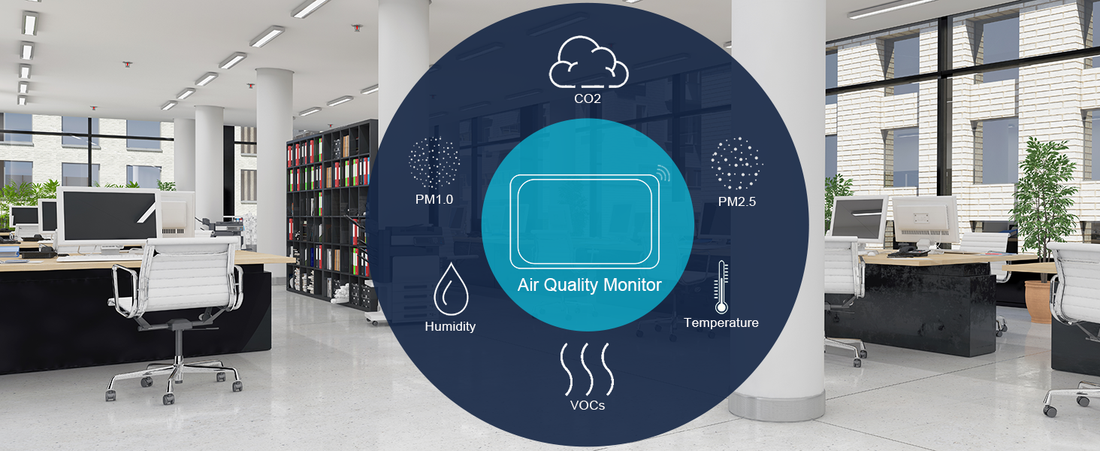
Prodo Technology Offers IoT Solution in Smart Building
Share
IoT-enabled smart buildings are the future of commercial real estate, and can help stakeholders improve efficiency, reduce costs and enhance comfort and productivity for occupants.
IoT, or the Internet of Things, refers to the network of technologies that connects smart devices into one seamless system. While smart devices are, by definition, able to connect with larger networks, only those involved in active data exchange and system integration are included in the IoT ecosystem. IoT devices are data-centric in nature, containing sensors and software equipped to collect information and communicate within a broader ecosystem of connected devices.
Today, IoT is an instinctive choice when it comes to synching our mobile devices with thermostats, sound systems, wearables and other daily-use technologies. At work, IoT offers an even greater opportunity to streamline processes and building efficiencies, with commercial applications including security systems, lighting, heating, ventilation and air conditioning (HVAC), and asset tracking.
Streamlined Connectivity and Employee Well-Being
From HVAC to security systems, commercial real estate – including office buildings – rely on an assortment of physical devices embedded with sensors, software and other technologies in order to maintain daily functionality. IoT helps streamline connectivity for both operational efficiency and employee satisfaction.
Building Automation and Optimization
IoT sensors can monitor indoor environmental quality (IEQ) in real time, enabling operations managers to track factors such as temperature, lighting and indoor air quality (IAQ) on a space-by-space basis. IoT sensors can also collect occupancy data, which can help managers identify underutilized spaces and optimize space allocation to maximize real estate within the building. Managers can also leverage IoT sensor data around energy consumption to monitor and regulate utility usage at a building level. This data can inform smarter decisions around energy optimization, for more efficient use of lighting, heating, cooling, air purification and other critical systems. This can lead to significant energy savings and a smaller environmental footprint.
Occupant Comfort and Productivity
Smart lighting, responsive air purification and adaptive HVAC systems, enabled by sensor technology and connected via IoT, can help promote occupant comfort and satisfaction. Circadian lighting, which is designed to mirror the pattern of natural sunlight throughout the day, can help boost productivity. Meanwhile, mitigating air pollutants such as particulate matter and volatile organic compounds (VOCs), and remediating CO2 levels, can help enhance cognitive function and promote overall health and well-being in the workplace. Communicating IoT sensor data around occupancy and indoor environmental conditions can also empower employees to tailor their working environment to individual tasks or comfort levels, whether choosing between warmer versus cooler spaces or social areas versus complete silence.
Market Edge for Smart Buildings
The market for smart buildings is expected to grow at a compound annual growth rate (CAGR) of 12.3% from 2023 to 2032 worldwide, reaching a $247.17 billion market size by 2032. Building owners can stay ahead of the curve by investing in smart systems as they evolve. In a market driven by technology and efficiency, there is high demand for comprehensive IoT suites that can produce invaluable metrics on command, empowering tenants to make data-driven decisions to optimize resources, occupant comfort, maintenance and administrative costs.
Building owners can leverage IoT data to offer tenants data-driven services such as personalized energy reports, space utilization insights and comfort optimization solutions. Building owners can also partner with service providers to offer additional IoT-based services such as security monitoring, delivery management and wellness programming.
IoT for Office Health
A network of IoT devices is designed to help you understand and improve the health and efficiency of your office. Designed for easy adoption, IoT network offers a range of devices that can be connected to create a comprehensive network of air purifiers and environmental sensors. Built-in sensors measure IEQ factors such as air quality, humidity, temperature, noise and lighting, as well as occupancy. All devices automatically remediate IAQ issues as pollutants arise in the space. The robust environmental sensing capabilities, unparalleled in a single device, provide real-time, contextual data that is invaluable for buildings seeking to improve health and efficiency at work.
Transform Real Estate with Customizable IoT
IoT has the potential to revolutionize the way commercial real estate and offices are managed and operated, enabling stakeholders to improve efficiency, reduce costs, enhance employee experience and create new revenue opportunities. IoT capabilities can help building owners, tenants or employees to personalize IEQ factors like temperature, humidity, lighting and air quality, helping to boost employee comfort and productivity. Smart buildings can also be advertised and leased based on their smart features and capabilities, attracting tenants who value technology and efficiency.
We harnesses the best of IoT, to help turn any office into a smart, healthy and connected space. The system’s proprietary algorithms are informed by years of cutting-edge research, leading building certification standards and industry best-practices. The most advanced system of connected, table-top air purifiers, We can help any company to better serve its customers and employees while promoting building health.

